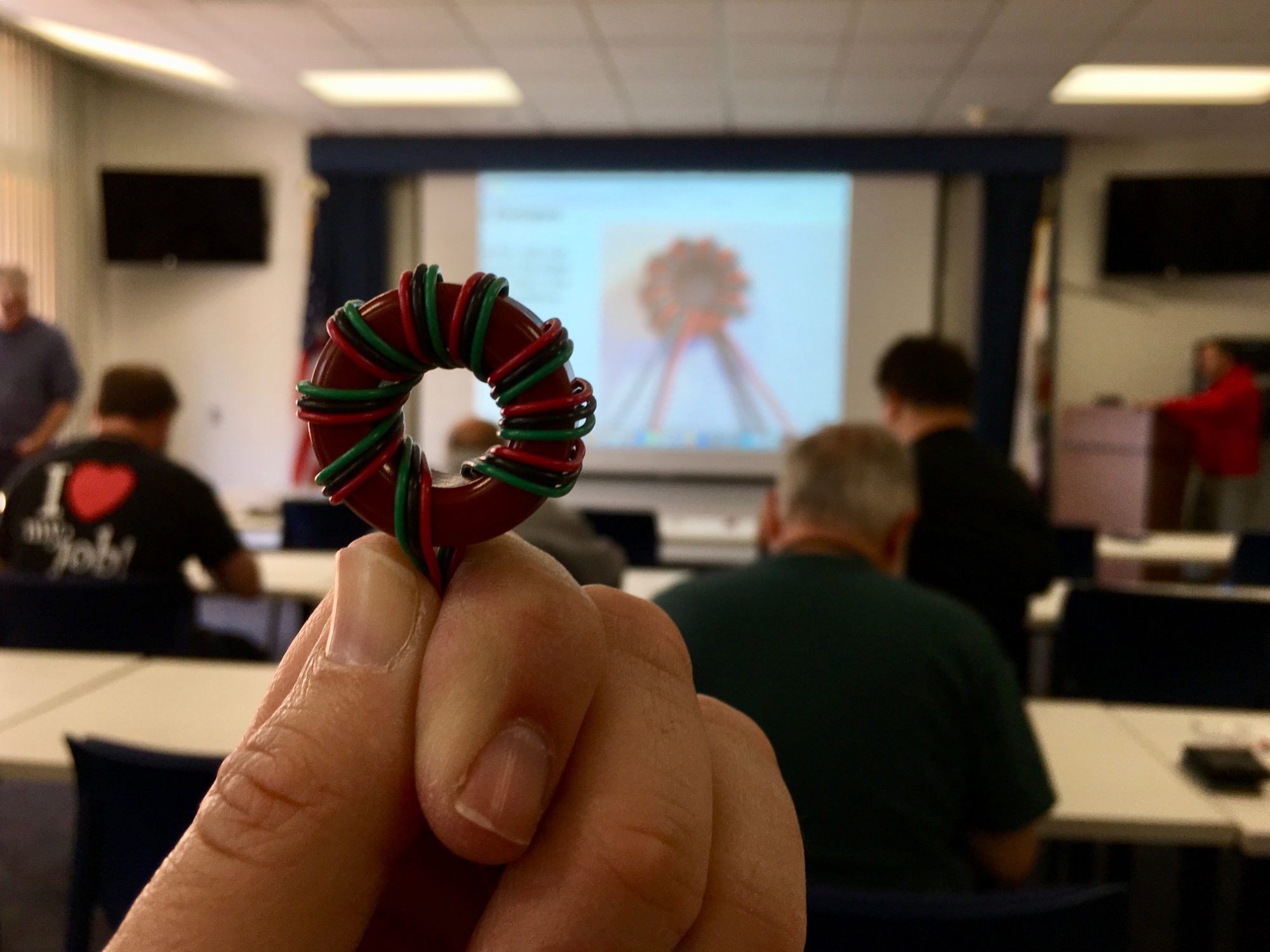During the third weekend of January, Pete Heins-N6ZE and Woodie Woodward-WA6WDY spent 16 hours roving around SoCal to have fun…and that’s what they did!
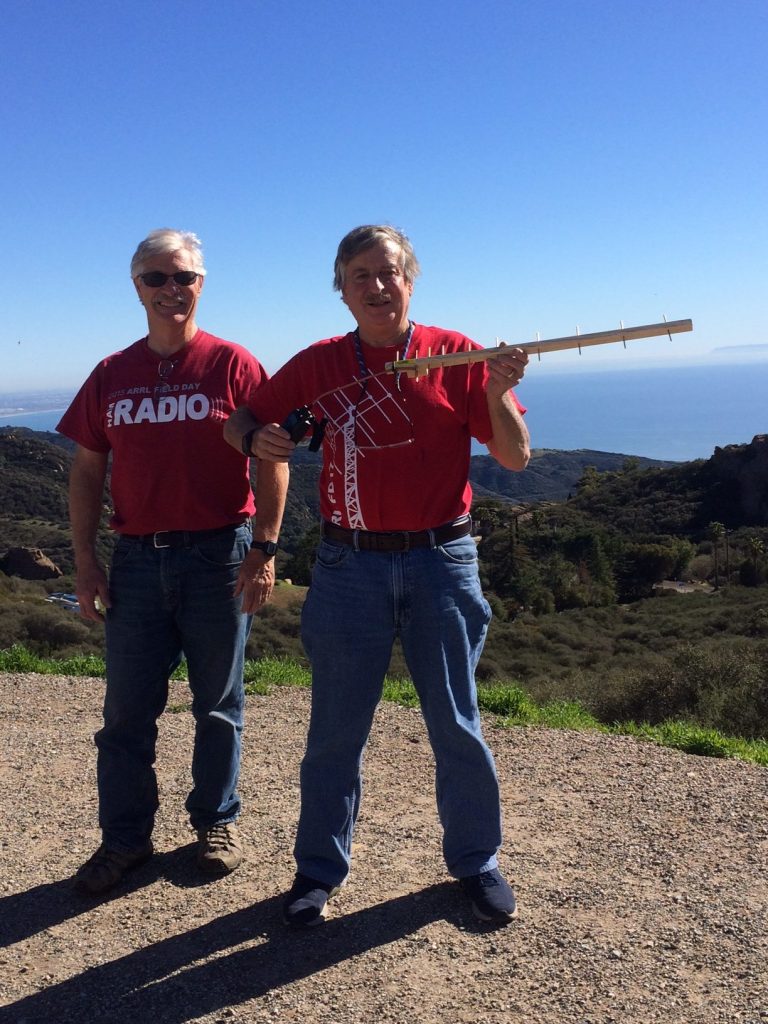
Pete and Woodie entered the ARRL’s January 2019 VHF Contest in the “Rover” category because they utilized six VHF/UHF bands: 6 meters on 50.125 MHz USB & 52.525 MHz FM; 2 meters on 144.200 MHz USB and various FM Simplex frequencies from 146.52 –> 146.61 MHz; 135 centimeters on 223.5 MHz FM; 70 centimeters on 432.1 MHz USB & 446.0 MHz FM; 33 centimeters on 927.5 MHz FM; and 23 centimeters on 1294.5 MHz FM.
As N6ZE/Rover, the duo drove 150 miles in Ventura, southern Los Angeles and Orange counties on Saturday. The weather was supreme with summer-like temperatures in the 70s, great visibility and calm winds. A temperature inversion, typically observed during summer months, was noted visually and by VHF/UHF signal reports between Malibu (DM04) and San Diego (DM12).
On Sunday, they drove 300 miles in Ventura, northern Los Angeles and Kern counties; temperatures were a bit lower than on Saturday with some winds in the high desert.
One of their “missions” for this contest was to encourage VHF/UHF operating by Ventura County amateur radio stations. In the weeks before the contest, N6ZE sent a number of e-mail announcements to Ventura County amateur radio clubs to advertise the event. On Saturday morning, at the beginning of the contest, and Sunday evening, near the finish of the VHF contest, they made special efforts to work stations in and around Thousand Oaks, their home territory. Because VHF contesting does not use repeaters and some newer hams have had very little experience with simplex (i.e. comms without the use of a repeater), this provided a great training opportunity for newbies and helped their contest score as well! They worked about 15 Ventura county stations on one or more bands from 6 meters to 23 cm.
For the lower bands, they only utilized voice (SSB & FM) and simple whip antennas* for this contest to keep things as simple as possible. (*Except for the 7 element 2 meter yagi they set up briefly in Mojave and hand-held yagis for 900 and 1200 MHz.)
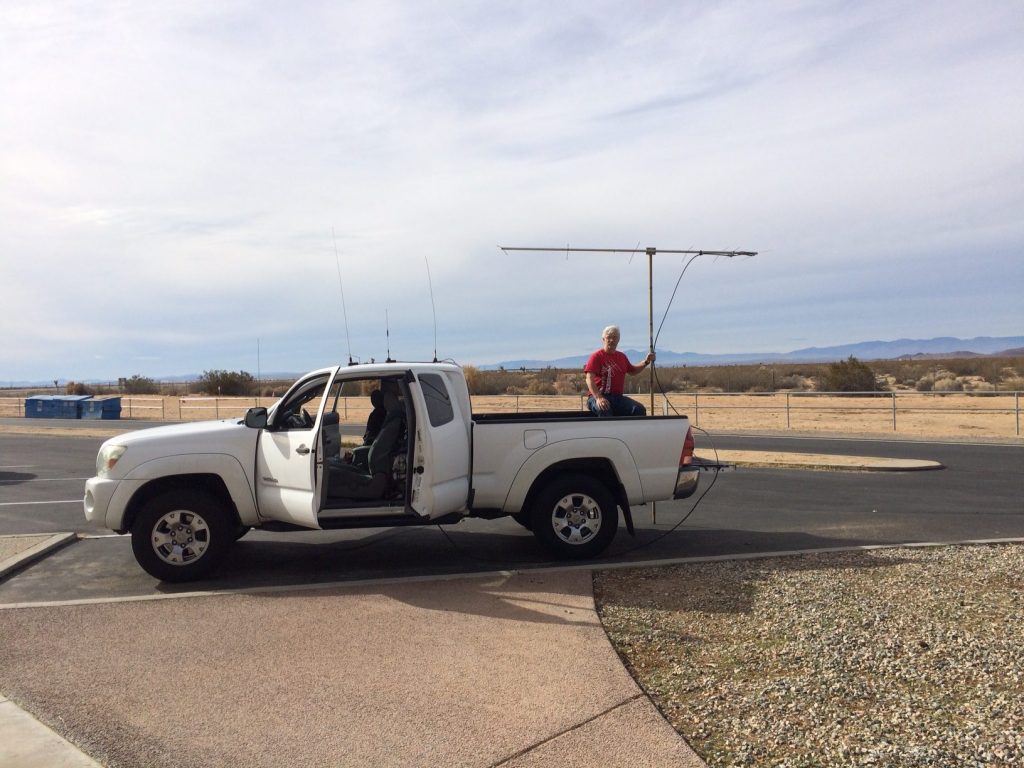
1. AM/FM broadcast whip on right front fender
2. 6 meter ¼ wave whip
3. 2m/70cm short whip
4. 223.5 MHz (135 cm) ½ wave whip
5. WA6WDY holding 7 element M-Square 2 meter yagi
N6ZE/R also used ALINCO handheld FM radios with modest 9 element yagis for 33 cm (927.5 MHz) and 23 cm (1294.5 MHz). They used only a yellow pad of paper for all logging. They did not bring a laptop so the N1MM logging program was not available nor did they utilize FT-8 data communications. They used an FT-857 all-band multi-mode radio for 6 meters, 2 meters, and 70 cm. That radio has two antenna terminals: one for HF and 6 meters and another one for both 2 meters and 70 cm. The ¼ wave 6 meter whip was connected at all times. A dual-band short whip was utilized for both 2 meters and 70 cm to eliminate antenna switching and to keep things simple. For 223.5 MHz FM, they used a Kenwood TM231 with ½ wave whip. Pete and Woodie intentionally kept things uncomplicated to minimize opportunities for error and failure.
Interesting bits of trivia: N6ZE/R activated six grids including DM03, DM04, DM05, DM13, DM14 and DM15. They operated from four ARRL Sections: Santa Barbara, Los Angeles, Orange and San Joaquin Valley in ARRL’s Southwestern Division.
QSOs: 133
Total number of 24 grids worked and 6 grids activated
Score: 5970
QSOs per Mile (QPM) = .296
Points per Mile (PPM): 13.27
They established contact with N6VI on six different bands while operating in DM04qb. While roving in Ventura, Los Angeles and Orange Counties on Saturday, N6ZE/R made just over 70 QSOs while driving about 150 miles. Grids DM03, DM12 and DM13 were added to our totals on a variety of bands, including 70 cm.
While roving in Canyon Country and the High Desert on Sunday, they made 25 QSOs while diving 300 miles.
The longest distance contact with a Thousand Oaks station was with W6RH on 2m while N6ZE/R was traveling on North on CA 14 near the Grapevine.
From DM15, they made contact with N6FD in DM15 on both 6 and 2 meters. They never heard any stations located in DM05 while they were in Mojave, but N6ZE/R made a number of contacts with stations in DM03, DM04, DM13, & DM15 during the drive in the high desert.
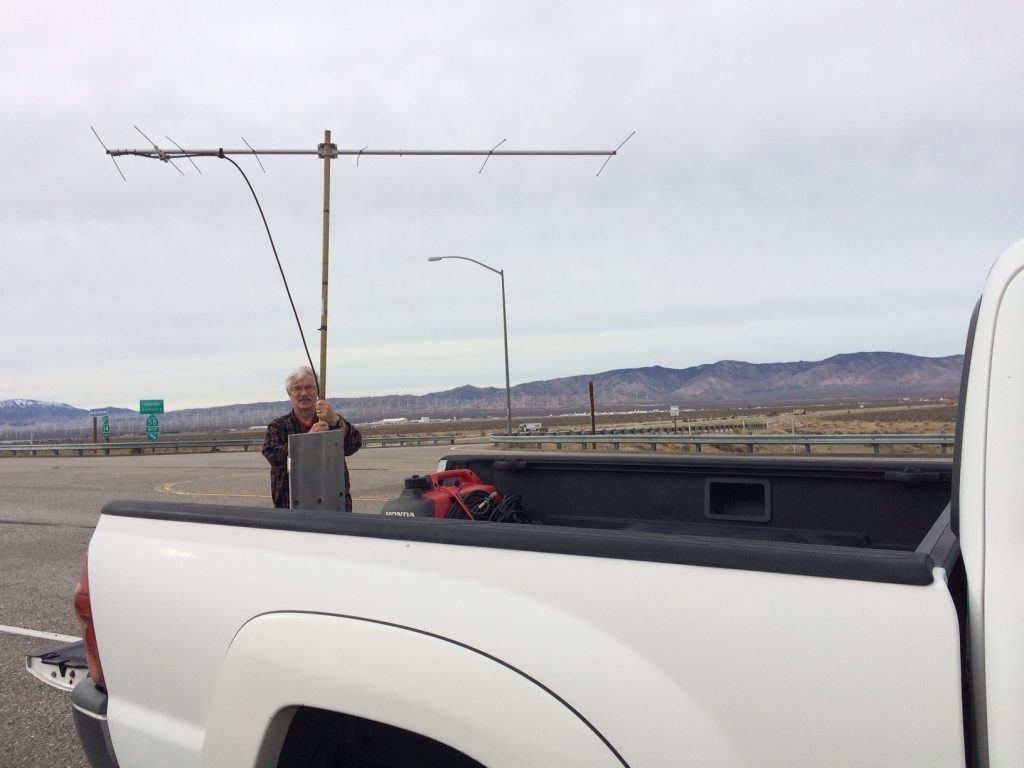
Roving within the city limits of Thousand Oaks netted local contacts with stations located from Ventura to Simi Valley. WA6EJO, Ventura (DM04jg) four bands, including 1294.5 MHz; N7WLC provided three bands, including 927.5 MHz; KK6UE, AB6ET, W6RH, AG6AG, W6NCT, AE6JR, W0UFC each provided three bands; and WI6O, K6KY, WA6RIE, KK6RBW, KM6MIN each provided one QSO. This was a nice demonstration of local VHF operating possibilities. Thanks to all for participating!
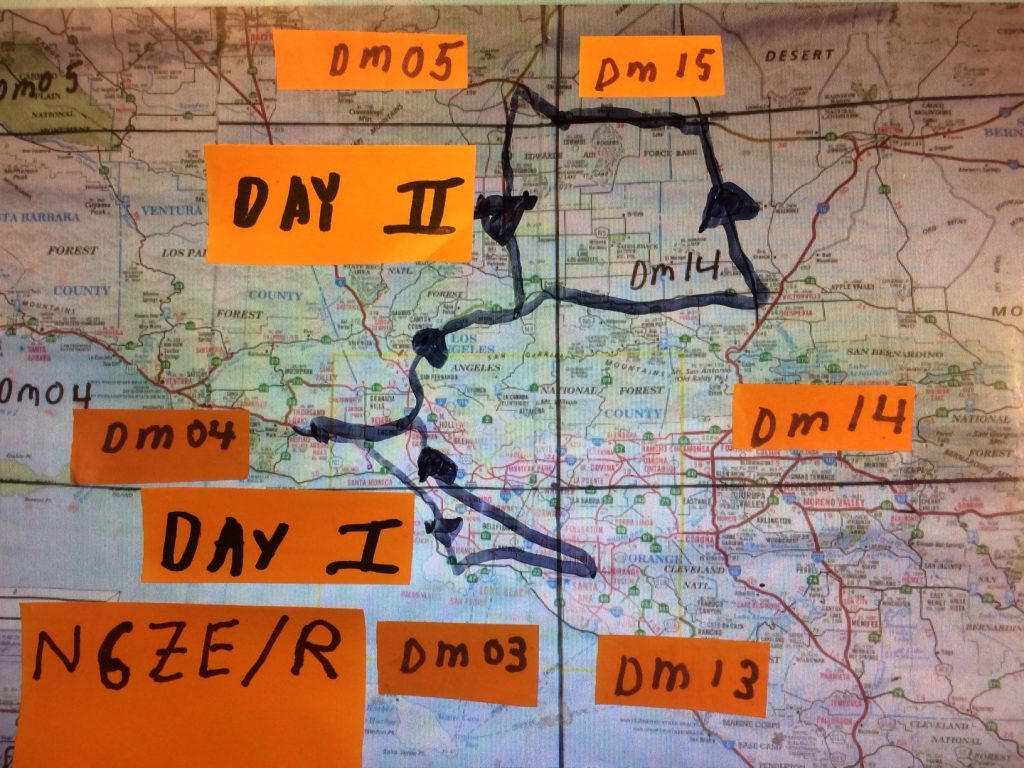
To determine in what grid N6ZE/R is actually located, three devices are typically used:
1. The “Ham Square” I-phone app that shows grid locator to 6 digits
2. A Garmin GPS that shows latitude and longitude, upon which the Grid Locator System is based.
3. AAA Auto Club of California map specially marked with grid locator boundaries
N6ZE/Rover’s ARRL January 2019 VHF Contest Statistics
| Band | 50 MHz | 144 MHz | 222 MHz | 432 MHz | 927.5 MHz | 1294.5 MHz |
|---|---|---|---|---|---|---|
| Total Grids Worked | 6 | 7 | 4 | 4 | 1 | 2 |
| QSOs: Stations Worked | 25 | 60 | 20 | 19 | 3 | 6 |
Note: At some point N6ZE plans to publish a primer of the DOs, DON’Ts, and MAYBEs for newbie VHF contesters developed from his years of VHF Contesting missteps and experience.
Bt73
Pete Heins, N6ZE
